
Welcome Nesting Sea Turtles
Sea Turtle Nesting season begins May 1st and ends October 31st.
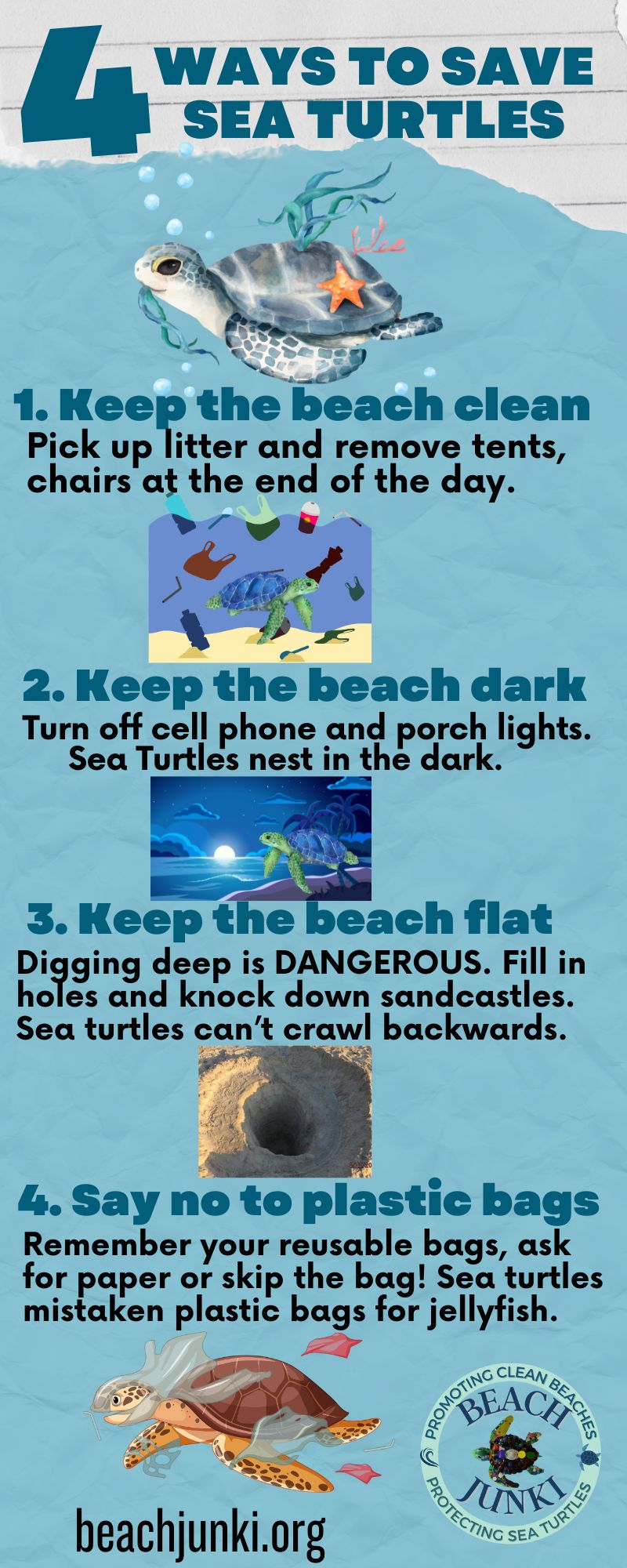
The 3 most common sea turtles nesting in Florida are the Loggerhead, Green, and Leatherback but recently there have been more reports of Kemp’s Ridley nesting in Florida.
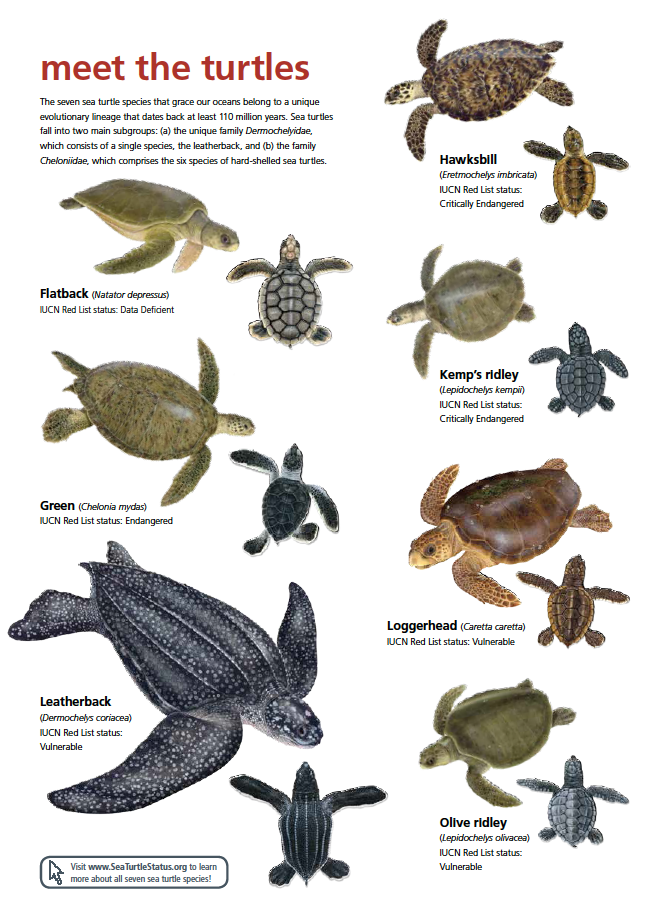
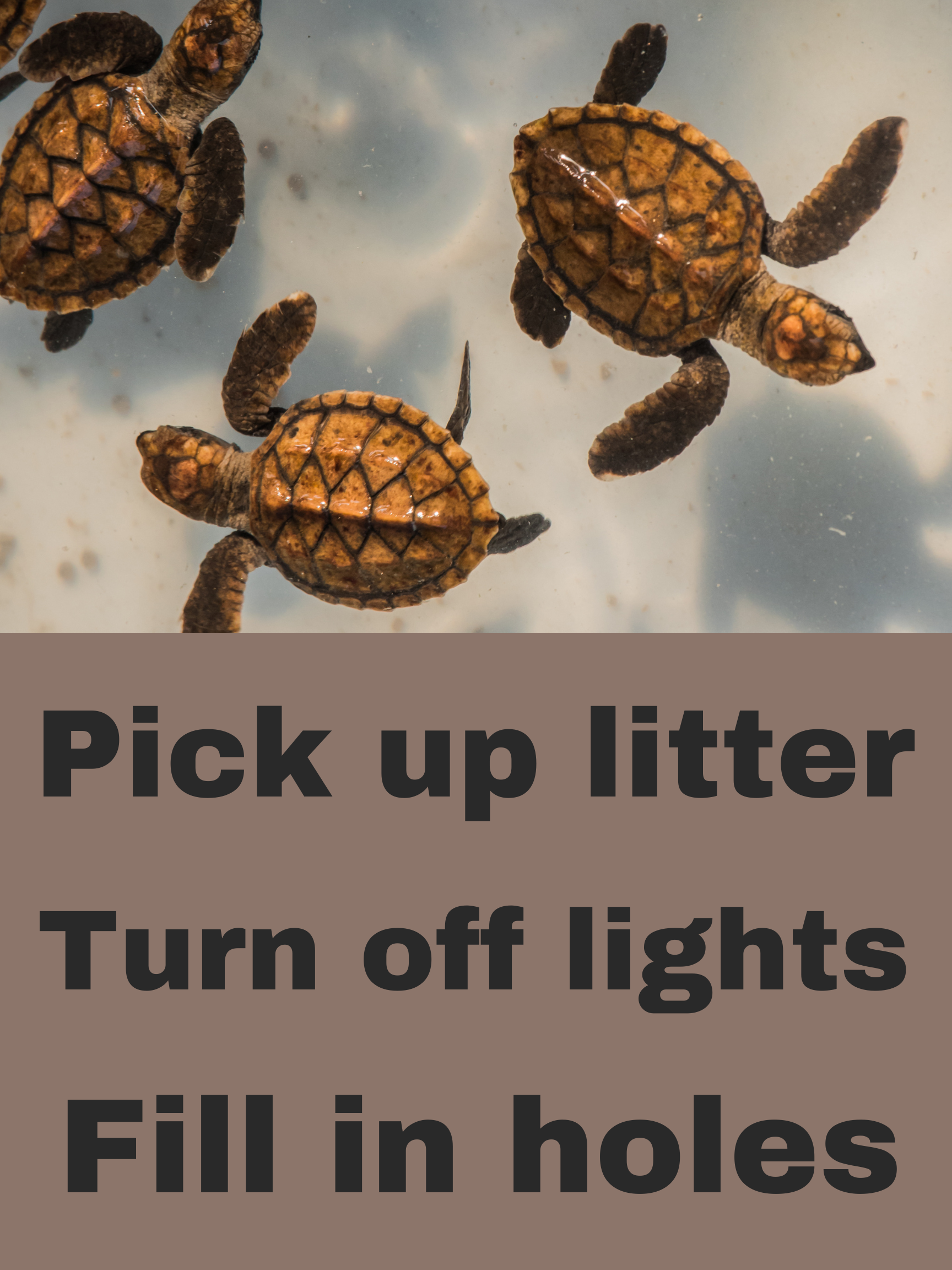
Be a Sea Turtle Hero
If you find a sea turtle in distress, injured, sick, or deceased, call Amelia Island Sea Turtle Watch:
904-583-1913
If you are at a State Park or outside of Nassau County, contact Florida Wildlife Conservation:
888-404-3922
Be prepared to answer some questions:
-
What is the exact location of the sea turtle and can you take a photo that will give the coordinates?
-
What is the location of the closest beach access point to the turtle?
-
What is the approximate size of the turtle?
-
Is the turtle marked with spray paint? (Spray paint indicates that the turtle has been documented.)
-
If the turtle is alive, please be prepared to stay with it until help arrives, if possible.
Thank you for saving a sea turtle.
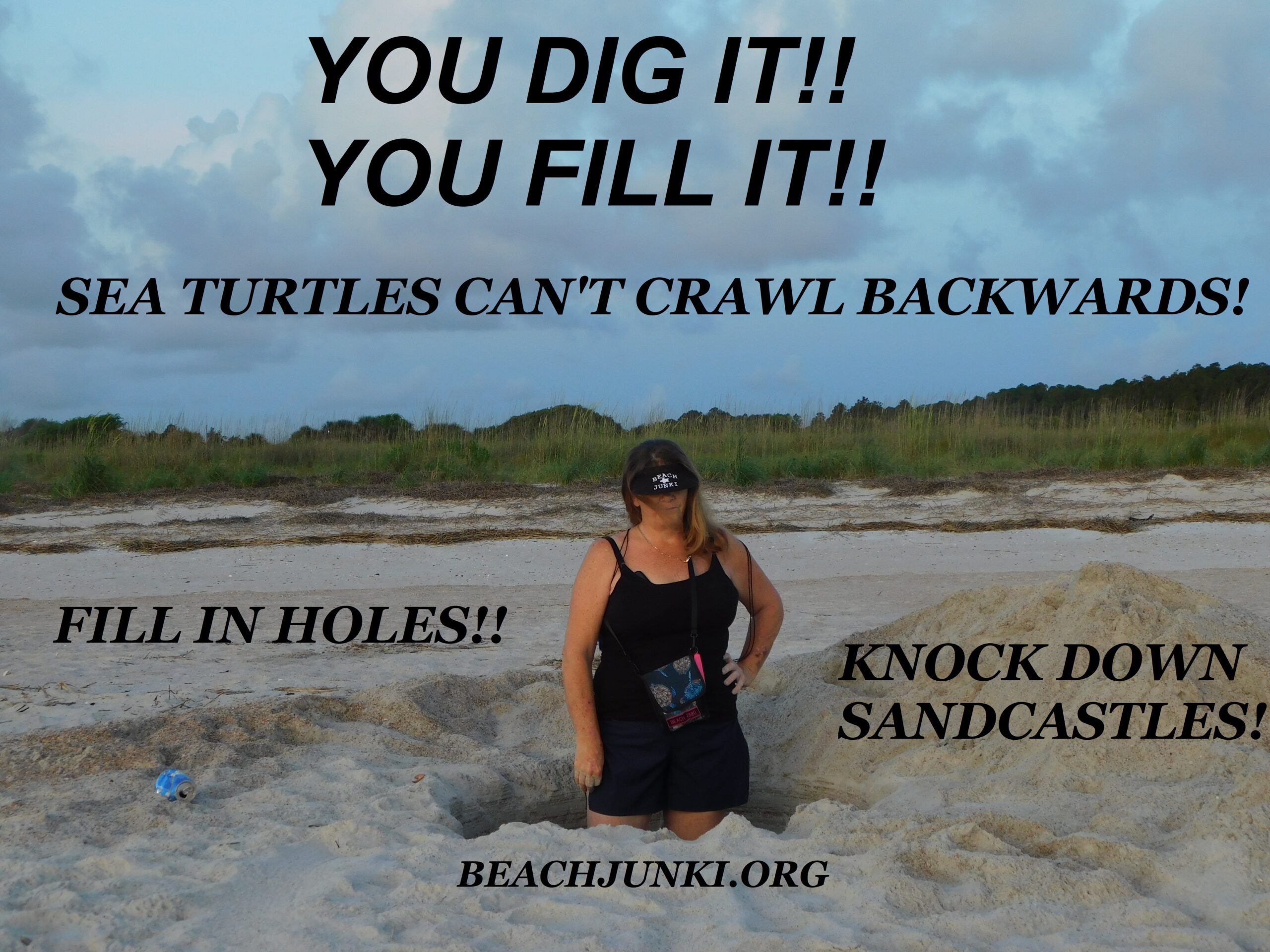
Sea Turtles Can't Crawl Backwards!
Look at this massive hole that someone dug and left behind! Everyone loves to build sandcastles and dig holes at the beach, but holes left behind can be dangerous to sea turtles and people walking or jogging on the beach. Sea turtles can accidentally crawl into holes, get trapped, and will need to be rescued, or could die. Please refill all holes and knock down sandcastles before you leave the beach.
You dig it. You fill it.
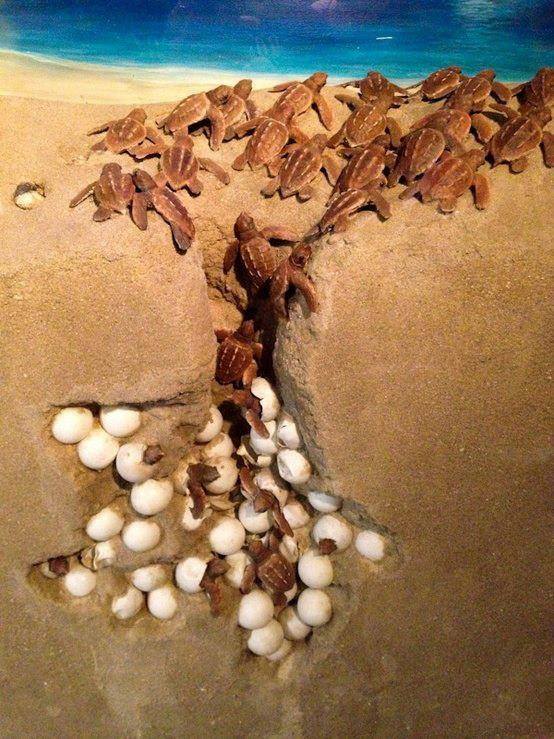
A look inside of a sea turtle's nest.
The egg chamber is long and narrow, but round at the bottom. It is sometimes described as an upside down light bulb. Turtles lay 80 to 150 eggs in each nest. After 62 days, the eggs hatch and baby sea turtles crawl out and make their way to the ocean as fast as they can. They will spend about 25 years out in the ocean before returning to nest on the same beach where they were hatched.
Beach Junki is a 501c(3) non-profit founded in Fernandina Beach Florida in 2020. Our organization depends on your support to help fund the cost of our outreach programs and educational materials to distribute at events. Thank you for donating to our mission.
CLICK HERE TO DONATE

